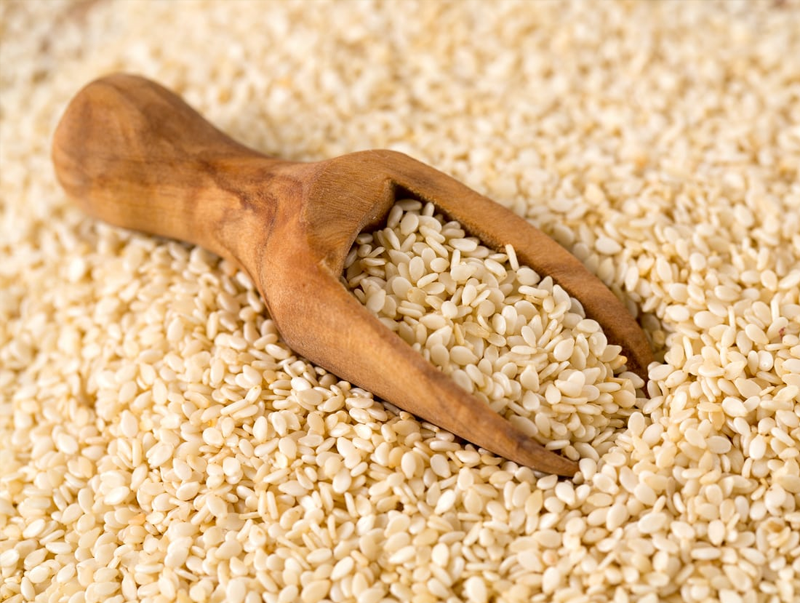
Sesame Seeds
Sesame seed is one of the oldest oilseed crops known, Sesame has one of the highest oil contents of any seed. With a rich, nutty flavor, it is a common ingredient in cuisines across the world. Like other nuts and foods, it can trigger allergic reactions in some people. Sesame seed is considered to be the oldest oilseed crop known to humanity. The genus has many species, and most are wild. Most wild species of the genus Sesamum are native to sub-Saharan Africa.
Producing countries:
India, Nigeria, Ethiopia, Tanzania
Grades
Hulled and Natural
Packing
PP and Paper Bag
Niger Seeds
Niger Seeds: Native to Ethiopia and Malawi, niger seed is also grown in India. Niger seed resembles sunflower seeds in shape, but is smaller in size and black. It bears a fairly thick, adherent seed coat and can be stored for up to a year without deterioration. Niger seed contains proteins, oil and soluble sugars. Niger seeds are used as bird feed worldwide.
Producing countries:
India, Ethiopia
Grades
sortex and cleaned
Packing
PP Bags
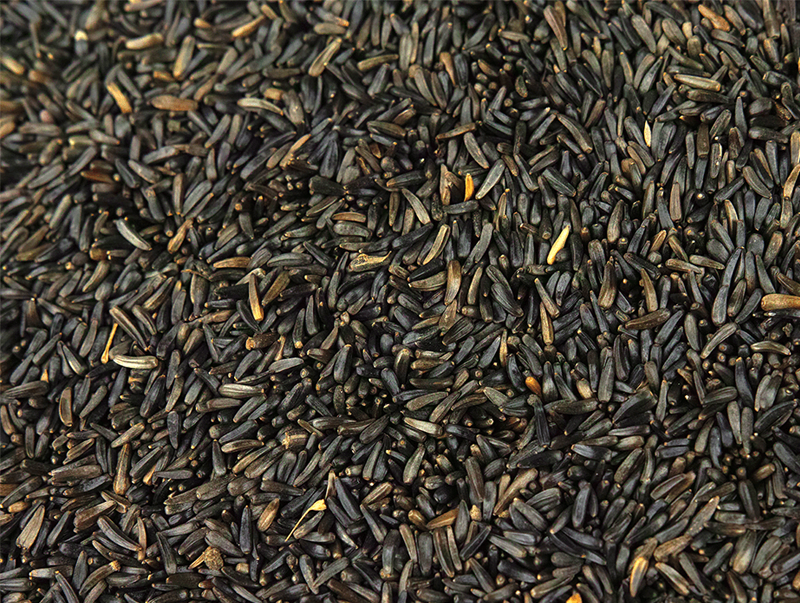
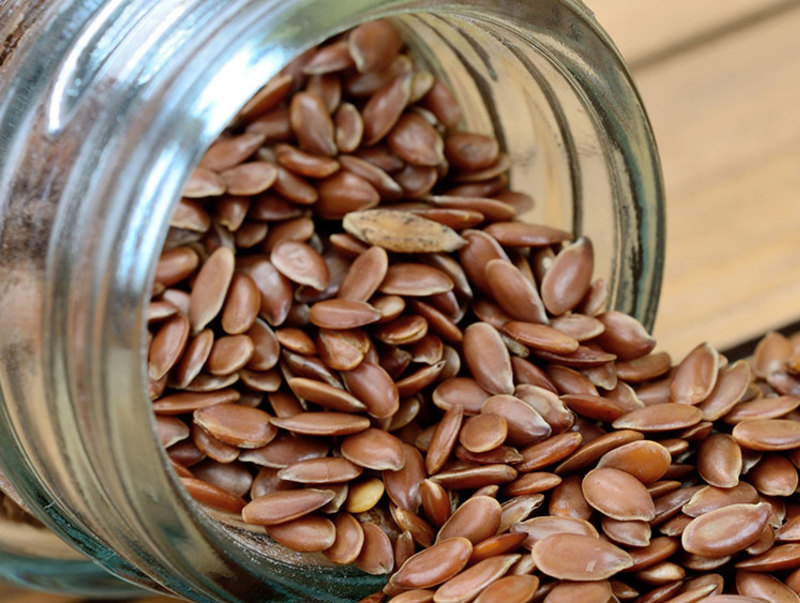
Flax Seeds
I. Flax Seeds: Flax also known as common flax or linseed, is a member of the genus Linum in the family Linaceae. It is a food and fiber crop cultivated in cooler regions of the world. Flax is grown for its oil, used as a nutritional supplement, and as an ingredient in many wood-finishing products. Flaxseeds occur in two basic varieties: brown, and yellow or golden (also known as golden linseeds).
Producing Countries:
Russia and Canada
Grades
sortex and cleaned
Packing
50 Kgs PP Bags
Palmoline
Palmoline: Palm oil is naturally reddish in color because of a high beta-carotene content. It is not to be confused with palm kernel oilderived from the kernel of the same fruit or coconut oil derived from the kernel of the coconut palm (Cocos nucifera). White palm oil is the result of processing and refining. When refined, the palm oil loses its deep red color. It is extensively used in food manufacture and can be found in a variety of processed foods including peanut butter and chips. It is often labeled as palm shortening and is used as a replacement ingredient for hydrogenated fats in a variety of baked and fried products. The highly saturated nature of palm oil renders it solid at room temperature in temperate regions, making it a cheap substitute for butter or trans fats in uses where solid fat is desirable, such as the making of pastry dough and baked goods. Red palm oil has been cold-pressed from the fruit of the oil palm and bottled for use as a cooking oil, in addition to other uses such as being blended into mayonnaise and vegetable oil.
Producing countries:
Indonesia, Malaysia
Grades
Refined CP-10, CP8, CP12
Packing
In Tin
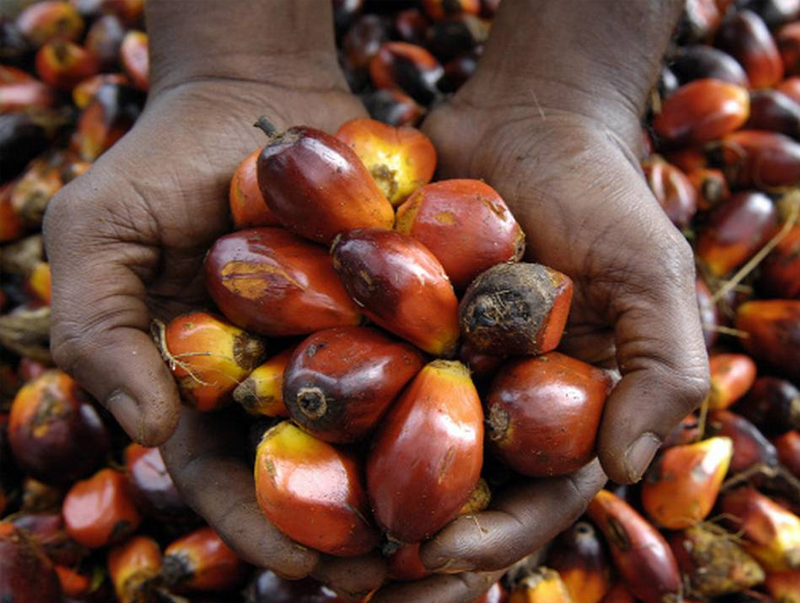
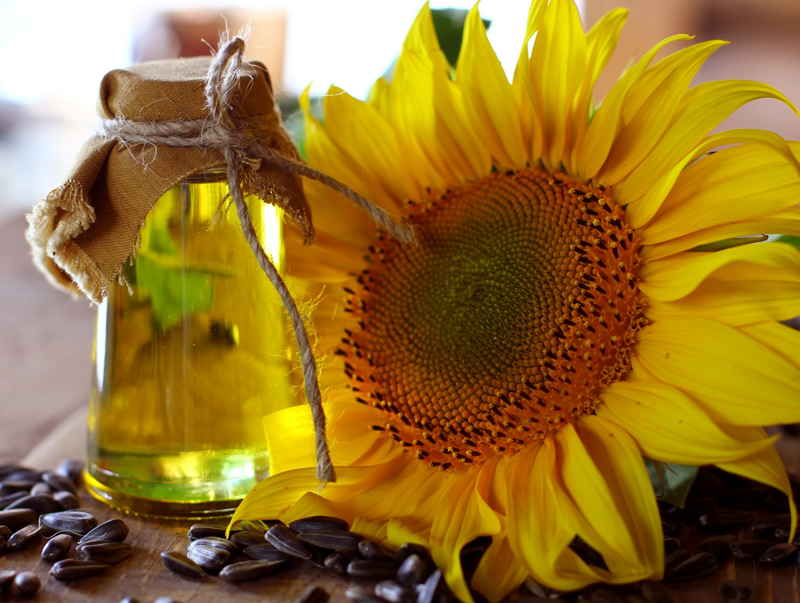
Sunflower Oil
Sunflower oil is the non-volatile oil pressed from the seeds of sunflower (Helianthus annuus). Sunflower oil is commonly used in food as a frying oil, and in cosmetic formulations as an emollient. The world's total production of sunflower oil in 2014 was nearly 16 million tonnes, with Ukraine and Russia as the largest producers. Refined sunflower oil is used for low-to-extremely-high-temperature cooking. As a frying oil, it behaves as a typical vegetable triglyceride. Unrefined sunflower oil is a traditional salad dressing in Eastern European cuisines. Sunflower oil is also an ingredient in sunflower butter.
Producing Countries:
Russia, Ukraine, Turkey
Grades
Crude and refined
Packing
Jerry Can